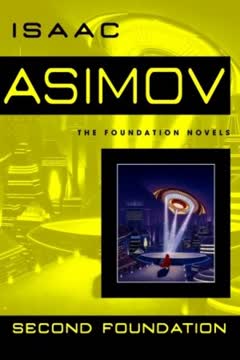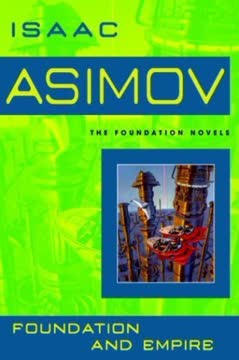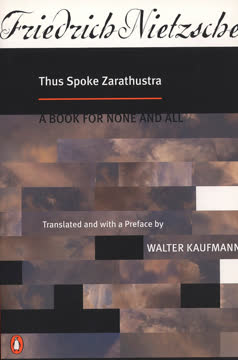اہم نکات
1۔ حقیقت شعور کا ایک تخلیق شدہ تصور ہے، نہ کہ مادی شے
شعور وہ بنیادی ذریعہ ہے جس سے حقیقت وجود میں آتی ہے — وجود کی وہ غیر مادی بنیاد جو ہر شے کی اصل ہے۔
شعور کو بنیاد سمجھنا۔ مصنف کا مؤقف ہے کہ حقیقت کی اصل بنیاد مادی شے نہیں بلکہ شعور ہے۔ یہ نظریہ ہمارے روایتی کائناتی فہم کو چیلنج کرتا ہے۔ جہاں پہلے ہم سمجھتے تھے کہ مادی دنیا سے شعور جنم لیتا ہے، یہاں اس کے برعکس کہا گیا ہے کہ شعور سے مادی دنیا کا ظہور ہوتا ہے۔
شعور پر مبنی حقیقت کے نتائج:
- طبیعی قوانین اور مظاہر شعور کے اظہار ہیں
- ذہن اور جسم کا مسئلہ ختم ہو جاتا ہے کیونکہ دونوں شعور کے تخلیق کردہ ہیں
- ماورائی مظاہر اس فریم ورک میں ممکنہ طور پر قابلِ فہم ہو جاتے ہیں
- ہمارا ذاتی شعور ایک وسیع، کائناتی شعور کا حصہ ہے
2۔ مطلق بے حد وحدت (AUO) مطلق بے حد کثرت (AUM) میں ارتقاء پاتی ہے
AUO کو پہلے یوں بیان کیا گیا تھا کہ یہ سب کچھ (واحد ماخذ) اور کچھ بھی نہیں (کوئی منفرد شے نہیں) ایک ساتھ ہے۔
ابتدائی شعور کا ارتقاء۔ مصنف AUO کو ابتدائی، غیر متفرق شعور کے طور پر متعارف کراتے ہیں جو AUM میں تبدیل ہوتا ہے، جو شعور کی ایک زیادہ پیچیدہ اور منظم شکل ہے۔ یہ ارتقاء بنیادی عمل کے ذریعے ہوتا ہے، جو حیاتیاتی ارتقاء کی طرح شعور پر لاگو ہوتا ہے۔
AUO سے AUM کے ارتقاء کی اہم خصوصیات:
- AUO شعور کی ممکنہ توانائی کے طور پر شروع ہوتا ہے
- بنیادی عمل تفریق اور پیچیدگی کو فروغ دیتا ہے
- AUM میں ساخت، یادداشت اور مقصد پیدا ہوتا ہے
- یہ ارتقاء ہماری حقیقت اور ذاتی شعور کے فریم ورک کی تشکیل کرتا ہے
3۔ ہماری مادی حقیقت شعور کی تخلیق کردہ ایک ورچوئل تجربہ ہے
خلاء-وقت شعور کا ایک انٹرفیس فلٹر ہے جو مادی حقیقت (PMR) کے تجربے کو شعور رکھنے والی مخلوقات کے لیے متعین کرتا ہے۔
ورچوئل حقیقت کی مثال۔ مصنف کا کہنا ہے کہ ہماری مادی حقیقت (PMR) ایک انتہائی پیچیدہ ورچوئل حقیقت کی مانند ہے جو شعور نے تخلیق کی ہے۔ یہ تصور ہماری دنیا کی فطری سمجھ کو چیلنج کرتا ہے مگر مادی اور غیر مادی مظاہر کو سمجھنے کا ایک فریم ورک فراہم کرتا ہے۔
اس ورچوئل مادی حقیقت کی خصوصیات:
- جگہ اور وقت تخلیق کردہ تصورات ہیں، بنیادی نہیں
- طبیعی قوانین اس ورچوئل کھیل کے قواعد کی مانند ہیں
- ہمارے جسم اور حواس اس ورچوئل حقیقت کے انٹرفیس ہیں
- متعدد حقیقتیں یا جہات ایک وسیع شعوری نظام میں بیک وقت موجود ہو سکتی ہیں
4۔ ارتقاء شعور کی ترقی کو بنیادی عمل کے ذریعے آگے بڑھاتا ہے
بنیادی عملِ ارتقاء اور ابتدائی شعور، جو ساخت پذیر توانائی کا بنیادی ماخذ ہے، MY Big TOE کی دو بنیادی مفروضے ہیں۔
شعور کا ارتقاء۔ مصنف پیش کرتے ہیں کہ شعور خود ایک ارتقائی عمل سے گزرتا ہے، جسے وہ بنیادی عمل کہتے ہیں۔ یہ عمل حیاتیاتی ارتقاء کی طرح ہے مگر یہ مادی شے کی بجائے شعور اور معلومات پر لاگو ہوتا ہے۔
شعور کے ارتقاء کی اہم خصوصیات:
- تمام ممکنات کو دریافت کرتا ہے اور فائدہ مند کو برقرار رکھتا ہے
- پیچیدگی میں اضافہ اور انٹروپی میں کمی لاتا ہے
- ذاتی شعور کے یونٹس (جیسے ہم) کی ترقی کو فروغ دیتا ہے
- متعدد "جہات" یا حقیقت کے فریمز میں کام کرتا ہے
5۔ آزاد مرضی اور نیت شعور کے ارتقاء کے لیے کلیدی حیثیت رکھتے ہیں
ہمارا عمل اہم نہیں، بلکہ اس کی وجہ یا نیت اہم ہے۔ نیت یا محرک انتخاب ہے۔
نیت کی طاقت۔ مصنف اس بات پر زور دیتے ہیں کہ ہماری آزاد مرضی کے انتخاب، خاص طور پر ہماری نیت اور محرکات، شعور کے ارتقاء میں نہایت اہم ہیں۔ یہ نقطہ نظر بیرونی عمل سے ذہنی اور قلبی حالات کی طرف توجہ مرکوز کرتا ہے۔
آزاد مرضی اور نیت کے نتائج:
- ہمارے انتخاب براہِ راست ہمارے شعور کے معیار کو متاثر کرتے ہیں
- نیتیں ہماری حقیقت کو جسمانی عمل سے زیادہ تشکیل دیتی ہیں
- شعور کا ارتقاء ارادی انتخاب سے ہوتا ہے
- روحانی ترقی بنیادی طور پر نیت کے معیار کو بہتر بنانے کا عمل ہے
6۔ روحانی ترقی شعور کی انٹروپی کو کم کرنے پر مشتمل ہے
درست محرک اور درست نیت ہی صحیح عمل کا واحد یقینی راستہ ہیں، جو مسلسل درست ترقی اور سیکھنے کی حوصلہ افزائی کرتے ہیں۔
انٹروپی کی کمی بطور ترقی۔ مصنف شعور میں انٹروپی کے تصور کو متعارف کراتے ہیں اور کہتے ہیں کہ روحانی ترقی کا مطلب انٹروپی کو کم کرنا ہے۔ یہ روحانی ترقی کو ایک نیم سائنسی فریم ورک فراہم کرتا ہے۔
روحانی ترقی کی اہم خصوصیات:
- کم انٹروپی = اعلیٰ معیار کا شعور
- ترقی ان انتخابوں سے ہوتی ہے جو انٹروپی کو کم کرتے ہیں
- درست محرک اور نیت انٹروپی کو کم کرنے کا باعث بنتے ہیں
- ہمارے انتخابوں سے ملنے والا فیڈبیک مزید ترقی کی رہنمائی کرتا ہے
7۔ انسان برتر نہیں بلکہ ایک وسیع شعوری نظام کا حصہ ہے
ہر مخلوق، بشمول آپ کے، کا اپنا مقام اور اہمیت ہے؛ تنوع ارتقاء کا قدرتی نتیجہ ہے جب پابندیاں کم ہوں۔
وسیع تصویر میں انکساری۔ مصنف انسان مرکزیت کے نظریات کو چیلنج کرتے ہیں اور کہتے ہیں کہ ہم ایک وسیع شعوری نظام کا حصہ ہیں۔ یہ نقطہ نظر انکساری اور حقیقت میں ہماری جگہ کی بہتر سمجھ کو فروغ دیتا ہے۔
اس نظریے کے نتائج:
- انسان ارتقاء کی چوٹی نہیں ہے
- دیگر مخلوقات (مادی اور غیر مادی) کے اپنے کردار اور مقاصد ہیں
- ہماری ذاتی ترقی بڑے نظام میں حصہ ڈالتی ہے
- اپنی جگہ کو سمجھنا ہم آہنگی اور مقصدیت کو بڑھا سکتا ہے
8۔ عقائد ہمارے فہمِ حقیقت کو محدود کر سکتے ہیں
عقیدہ اس وقت پیدا ہوتا ہے جب کوئی شخص بغیر سائنسی جانچ پڑتال کے یقین کر لیتا ہے کہ چیزیں ویسی ہی ہیں جیسی وہ سمجھتا ہے۔
عقائد کی حدود سے بالا ہونا۔ مصنف اس بات پر زور دیتے ہیں کہ ہمارے ثقافتی، مذہبی یا ذاتی عقائد حقیقت کی سمجھ کو محدود کر سکتے ہیں۔ وہ کھلے ذہن، شک اور ذاتی تجربے کو اندھے عقیدے پر فوقیت دیتے ہیں۔
عقائد فہم کو کیسے محدود کرتے ہیں:
- ذہنی "باکس" بناتے ہیں جو سوچ کو محدود کرتے ہیں
- دائرہ وار استدلال اور تصدیقی تعصب کو جنم دیتے ہیں
- نئے خیالات اور تجربات کی تلاش کو روکتے ہیں
- حقیقی فہم کی جگہ آرام دہ جھوٹے علم کو لے لیتے ہیں
9۔ درست محرک اور نیت عمل سے زیادہ اہم ہیں
اگر نیت غلط ہو تو، ارتقائی شعور کے نقطہ نظر سے، انتخاب (محرک کا، عمل کا نہیں) غلط سمجھا جاتا ہے۔
محرک کی برتری۔ مصنف دلیل دیتے ہیں کہ شعور کے ارتقاء کا معیار ہمارے محرکات اور نیتوں سے زیادہ متاثر ہوتا ہے نہ کہ صرف ہمارے ظاہری اعمال سے۔ یہ روحانی ترقی کی توجہ کو اندرونی تبدیلی کی طرف موڑتا ہے۔
محرک پر توجہ کے نتائج:
- صرف عمل روحانی ترقی کا تعین نہیں کرتے
- ایک ہی عمل مختلف نیتوں سے مختلف اثرات رکھتا ہے
- درست محرک کی ترقی روحانی پیش رفت کی کنجی ہے
- اندرونی تبدیلی بیرونی تبدیلی سے پہلے آتی ہے اور اسے شکل دیتی ہے
10۔ درد اور تکلیف اکثر غلط انتخاب اور نیتوں سے جنم لیتی ہے
عمومی قاعدہ یہ ہے کہ آپ کی زندگی کا زیادہ تر درد خود ساختہ ہوتا ہے جبکہ بہت کم تکلیف باہر سے آپ پر مسلط ہوتی ہے۔
تکلیف کی ذاتی ذمہ داری۔ مصنف کہتے ہیں کہ ہماری زیادہ تر تکلیف اور درد ہمارے اپنے انتخاب اور نیتوں کی وجہ سے ہوتا ہے، نہ کہ بیرونی حالات کی وجہ سے۔ یہ نقطہ نظر افراد کو اندرونی تبدیلی کے ذریعے اپنے تجربے کو بدلنے کا اختیار دیتا ہے۔
درد اور تکلیف کی سمجھ:
- زیادہ تر تکلیف غلط انتخابوں سے خود پیدا ہوتی ہے
- بیرونی حالات کا کردار اتنا بڑا نہیں جتنا ہم سمجھتے ہیں
- اپنے انتخاب اور نیتوں کو بدل کر تکلیف کم کی جا سکتی ہے
- درد ترقی کے لیے ایک فیڈبیک میکانزم ہو سکتا ہے
آخری تازہ کاری:
FAQ
What's My Big TOE about?
- Unified Theory: My Big TOE stands for "My Big Theory Of Everything," aiming to unify philosophy, physics, and metaphysics into a coherent model of reality. It explores the interconnectedness of these fields.
- Consciousness Focus: The book posits that consciousness is the fundamental substance of reality, with everything else, including physical matter, derived from it.
- Digital Reality: Thomas Campbell introduces the idea that our physical reality is a digital simulation created by a larger consciousness system, challenging traditional views of existence.
Why should I read My Big TOE?
- Broadens Perspective: Reading My Big TOE can significantly expand your worldview, challenging existing beliefs and encouraging deeper exploration of consciousness.
- Integrates Science and Spirituality: The book merges scientific principles with spiritual insights, providing a framework for understanding complex concepts in a coherent manner.
- Encourages Personal Growth: Campbell emphasizes the importance of personal evolution and the role of free will in shaping our experiences, inspiring readers to take charge of their own growth.
What are the key takeaways of My Big TOE?
- Consciousness is Fundamental: The book asserts that consciousness is the primary substance of reality, shifting the focus from a materialistic view to one centered on awareness and experience.
- Evolution of Consciousness: It emphasizes that the primary purpose of existence is to evolve the quality of consciousness through experiences and choices.
- Interconnectedness: The text highlights the interconnectedness of all beings, suggesting that individual growth contributes to the overall evolution of the larger consciousness system.
What are the best quotes from My Big TOE and what do they mean?
- “The proof of the pudding is in the eating.”: This emphasizes that the validity of knowledge should be tested through experience and results, not just theoretical understanding.
- “You cannot believe your way into consciousness quality.”: This highlights the importance of personal experience over mere belief, underscoring that true understanding comes from direct engagement.
- “The quality of your being expresses the correctness of your understanding.”: This suggests that personal growth reflects one's understanding of reality, implying that deeper understanding leads to a more evolved existence.
How does Thomas Campbell define consciousness in My Big TOE?
- Primordial Consciousness: Campbell defines consciousness as the fundamental energy that underlies all reality, positioning it as the source from which all experiences arise.
- Digital Nature: He describes consciousness as a form of digital energy capable of self-organization and evolution, aligning with the idea that it is not merely a byproduct of biological processes.
- Individuated Units: The book introduces individuated units of consciousness, which are unique expressions of the larger consciousness system, each with its own experiences and evolutionary path.
What is the Fundamental Process in My Big TOE?
- Evolutionary Mechanism: The Fundamental Process is the mechanism through which consciousness evolves by exploring possibilities and making choices.
- Entropy Reduction: This process is driven by the need to reduce entropy and improve the quality of consciousness, emphasizing growth and development.
- Iterative Nature: It operates iteratively, meaning each cycle of exploration and choice leads to new opportunities for growth, allowing consciousness to adapt over time.
How does My Big TOE explain the relationship between consciousness and reality?
- Reality as Construct: Campbell argues that reality is a construct of consciousness, shaped by the interactions and choices of individuated units of consciousness.
- Interconnected Dimensions: The book describes multiple dimensions of reality, each with its own rule-set, suggesting that our experiences are part of a larger, more complex system.
- Feedback Mechanism: The relationship is dynamic, with feedback loops that influence both consciousness and reality, where choices affect reality and experiences shape consciousness.
What role does free will play in My Big TOE?
- Central to Consciousness: Free will is portrayed as a fundamental aspect of consciousness, allowing individuals to make choices that shape their experiences.
- Influences Quality: The quality of consciousness is directly related to the choices made through free will, with higher quality choices leading to lower entropy.
- Feedback Loop: Free will operates within a feedback loop where the outcomes of choices inform future decisions, vital for the evolution of consciousness.
How does My Big TOE address the concept of belief?
- Belief vs. Knowledge: Campbell differentiates between belief and knowledge, asserting that beliefs can limit understanding and encourages seeking knowledge through personal experience.
- Belief Traps: The book discusses belief traps, where individuals become stuck in their beliefs, warning against dogma and encouraging open-minded skepticism.
- Cultural Influence: Campbell highlights how cultural beliefs shape perspectives and limit understanding, advocating for questioning and reassessing beliefs for personal growth.
What is the significance of the psi uncertainty principle in My Big TOE?
- Interrelation of Consciousness and Reality: The psi uncertainty principle suggests that consciousness influences reality, blurring lines between subjectivity and objectivity.
- Implications for Science: It challenges traditional scientific views, implying that consciousness must be considered in scientific inquiry, especially in fields exploring reality.
- Exploration of Paranormal Phenomena: The principle provides a framework for understanding paranormal phenomena, suggesting they are integral aspects of consciousness interacting with reality.
How does My Big TOE propose to redefine the significance of existence?
- Integration of Mind, Body, and Spirit: Campbell argues for the integration of these elements, challenging traditional separations and promoting a holistic view of human experience.
- Purpose and Meaning: Understanding existence involves exploring the purpose and meaning behind life experiences, leading to greater self-awareness and fulfillment.
- Collective Evolution: Individual growth contributes to the collective evolution of consciousness, highlighting the significance of each person's journey in shaping larger reality.
How can I apply the concepts from My Big TOE to my life?
- Focus on Personal Growth: Engage in practices that promote the reduction of entropy in your consciousness, such as mindfulness and self-reflection.
- Embrace Free Will: Recognize the power of your choices and how they shape your experiences and contribute to your personal evolution.
- Explore the Bigger Picture: Cultivate an understanding of the interconnectedness of all beings and how your growth impacts the larger consciousness system, encouraging responsibility and purpose.
جائزے
مائی بگ ٹی او ای از تھامس کیمبل کو زیادہ تر قارئین کی جانب سے بے حد سراہا گیا ہے، جو اسے زندگی بدل دینے والا اور بصیرت افروز سمجھتے ہیں۔ یہ کتاب کائنات کے تمام پہلوؤں کی ایک جامع تھیوری پیش کرتی ہے، جس میں سائنس، فلسفہ، اور روحانیت کا حسین امتزاج پایا جاتا ہے۔ بہت سے لوگ کیمبل کے شعور کی تحقیق کے سائنسی نقطہ نظر کو قدر کی نگاہ سے دیکھتے ہیں۔ ناقدین کتاب کی طوالت، بار بار دہرانے اور بعض اوقات غیر پیشہ ورانہ انداز تحریر کی نشاندہی کرتے ہیں۔ قارئین عموماً اسے ایک چیلنجنگ مگر فائدہ مند مطالعہ قرار دیتے ہیں، جو حقیقت کو ایک نئے زاویے سے دیکھنے کا موقع فراہم کرتا ہے۔ کچھ لوگ اس کی گہرائی سے نبرد آزما ہوتے ہیں، جبکہ دیگر اسے اپنی زندگی کی سب سے اہم کتابوں میں شمار کرتے ہیں۔
Similar Books














